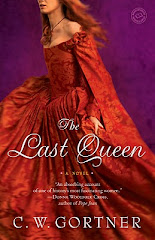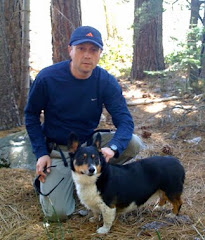 I'm delighted to welcome Lauren Willig, bestselling author of The Pink Carnation series, whose novel THE ASHFORD AFFAIR debuts today. Set in the 1920s and modern-day Manhattan, this enthralling tale of two women and the family secrets that bind them moves from the inner circles of WWI-era British society to the broad expanses of Kenya. Lauren has been highly praised for her novels and The Ashford Affair is no exception, with Library Journal starring its review, saying: "[A] nuanced story teeming with ambiance and detail that
unfolds like African cloth, with its dips and furls and textures, woven by a
master storyteller."
I'm delighted to welcome Lauren Willig, bestselling author of The Pink Carnation series, whose novel THE ASHFORD AFFAIR debuts today. Set in the 1920s and modern-day Manhattan, this enthralling tale of two women and the family secrets that bind them moves from the inner circles of WWI-era British society to the broad expanses of Kenya. Lauren has been highly praised for her novels and The Ashford Affair is no exception, with Library Journal starring its review, saying: "[A] nuanced story teeming with ambiance and detail that
unfolds like African cloth, with its dips and furls and textures, woven by a
master storyteller."Please join me in welcoming Lauren Willig.
Please you tell us about your inspiration for writing THE ASHFORD AFFAIR.
THE ASHFORD AFFAIR was one of those books that popped up out
of the blue. I wasn’t meant to be
writing about 1920s Kenya; I was scheduled to write another novel set during
the Napoleonic Wars. But one rainy
afternoon in the fall of 2010, a friend sent me a copy of Frances Osbornes’s The Bolter as a gift. It wasn’t just that I was fascinated by the
rackety life of British expats in Kenya; I was deeply struck by the author’s
comment, in the preface, that she hadn’t known that the Bolter (aka Idina
Sackville) was her great-grandmother until she was in her teens. The family had kept the relationship under
wraps.
At the time, my own grandmother was very ill, and it struck
me, forcibly, how much we assume and how little we know of our own family
members and their pasts. What if a
modern woman were to discover that nothing about her family was as it seemed? Once
the idea struck, it wouldn’t go away. I
put the next Napoleonic book on hold, read up on Edwardian England, World War
I, and 1920s Kenya, and launched into the story that would eventually become
THE ASHFORD AFFAIR.
What drew you to the particular era that your book depicts?
What are some of the challenges and/or delights about writing about this time?
If you had told me two years ago that I was going to write a
book set entirely in the twentieth century, I would have made rude noises of
incredulity. After nine novels all set
during the Napoleonic Wars, I had always assumed that if I were to jump
century, as it were, I would go back in time to the seventeenth century, the
era of my abandoned doctoral thesis, or perhaps even earlier than that. The twentieth century was just so…
modern. In particular, I’ve always
avoided World War I, with its gas masks and trenches and mechanized warfare.
I had no idea what I was missing.
Periods of flux and change make for larger than life
characters and great fiction—and the World War I era doesn’t lack for
either. One of the delights of writing
about World War I England and 1920s Kenya was that I came to the topic knowing
so little (despite a brief stint in grad school TA-ing a class on colonial
Kenya—but that’s a whole other story!).
My research was a journey of discovery, fresh and exciting, and I hope
that fascination with the time period, with the quirks and characters I was
discovering, came across in the book itself.
What process did you use to transport yourself (and readers)
to another time period? How do you go about research and incorporating it into
fiction?
I’ve always found that the best way to get a sense of the
time is to read the firsthand accounts of those who lived it: letters, diaries,
novels, memoirs. (Allowing, of course,
for the tendency of memoirs to shift the truth about to exculpate the author!) Fortunately for me, the denizens of the early
twentieth century were not chary with their prose. I found a wealth of material that I was able
to draw on to understand how my characters would have perceived and reacted to
various places and events. Rupert
Graves’s World War I memoir, Goodbye to
All That, left a deep impression on me (and my characters), as did Beryl
Markham’s account of her days as an aviatrix in Kenya. Many of their experiences, as well as those
of others, found their way into the lives of my characters.
For those wanting to read more on the topic, I have a
truncated bibliography up on my website.
Does your historical fiction convey a message or theme
relevant to our world today? If so, what do you think it is? If not, how do you
think readers can find common ground with the characters in your story?
THE ASHFORD AFFAIR zigzags back and forth between a modern
woman in 1999 and the life of her grandmother in the 1910s and 20s. When we meet my modern heroine, Clemmie,
she’s running late to her grandmother’s ninety-ninth birthday party, harried
and coffee-stained, on track for a partnership at a prestigious law firm—but at
the cost of lost friendships and a broken engagement.
I know many women like Clemmie, women who have been told, by
teachers and mothers, that they’re meant to go out and grasp with both hands
all that the previous generations of women have been denied, who achieve and
achieve and achieve, and wake up one day—usually at one a.m. in the office with
half-filled coffee cups scattered around them—to ask, “How did I go wrong? Why
is this making me so miserable?” With
all of the discussion these days of leaning in, leaning out and work/life
balance, I think there are many who will find Clemmie’s experience particularly
relevant.
Can you tell us about your next project?
I’ve been hopping time periods. In August, the tenth book in my madcap
Napoleonic-set spy series, THE PASSION OF THE PURPLE PLUMERIA, hits the shelves. Set in Bath in 1805, a chaperone turned spy
and a former Colonel in the East India Company’s army join forces to find a
pair of missing school girls and a legendary cache of missing jewels—unless
someone else finds them first….
I am also very excited about my next major stand- alone
novel (still untitled) which will be coming out in the spring of 2014. This new
stand-alone goes back and forth between 2009 and 1849, as a modern woman,
raised in New York, is drawn back to the suburbs of London when she
unexpectedly inherits a house from an unknown great-aunt. In the old house on Herne Hill, she discovers
a lost Preraphaelite painting hidden away in the back of a wardrobe. As our modern heroine hunts down the
provenance of the painting—and the fate of the man who painted it—she discovers
a tale of forbidden love and a hushed up family scandal with reverberations
through the generations.I had such fun researching the early days of the
Preraphaelite movement—and, of course, coopting Dante Gabriel Rossetti as a
side character!
Thanks so Lauren and best of luck with The Ashford Affair. To find out more about Lauren and her work, please visit her website,













3 comments:
This is a wonderful interview! And I am SO excited about my pre-order of The Ashford Affair delivering today! :)
Oooh, this sounds so good! I love Lauren's Pink Carnation series and I love novels set during WWI and so I'm really looking forward to this. Thi is a must-have for me!
this is a fantastic blog.
book publicist
Post a Comment